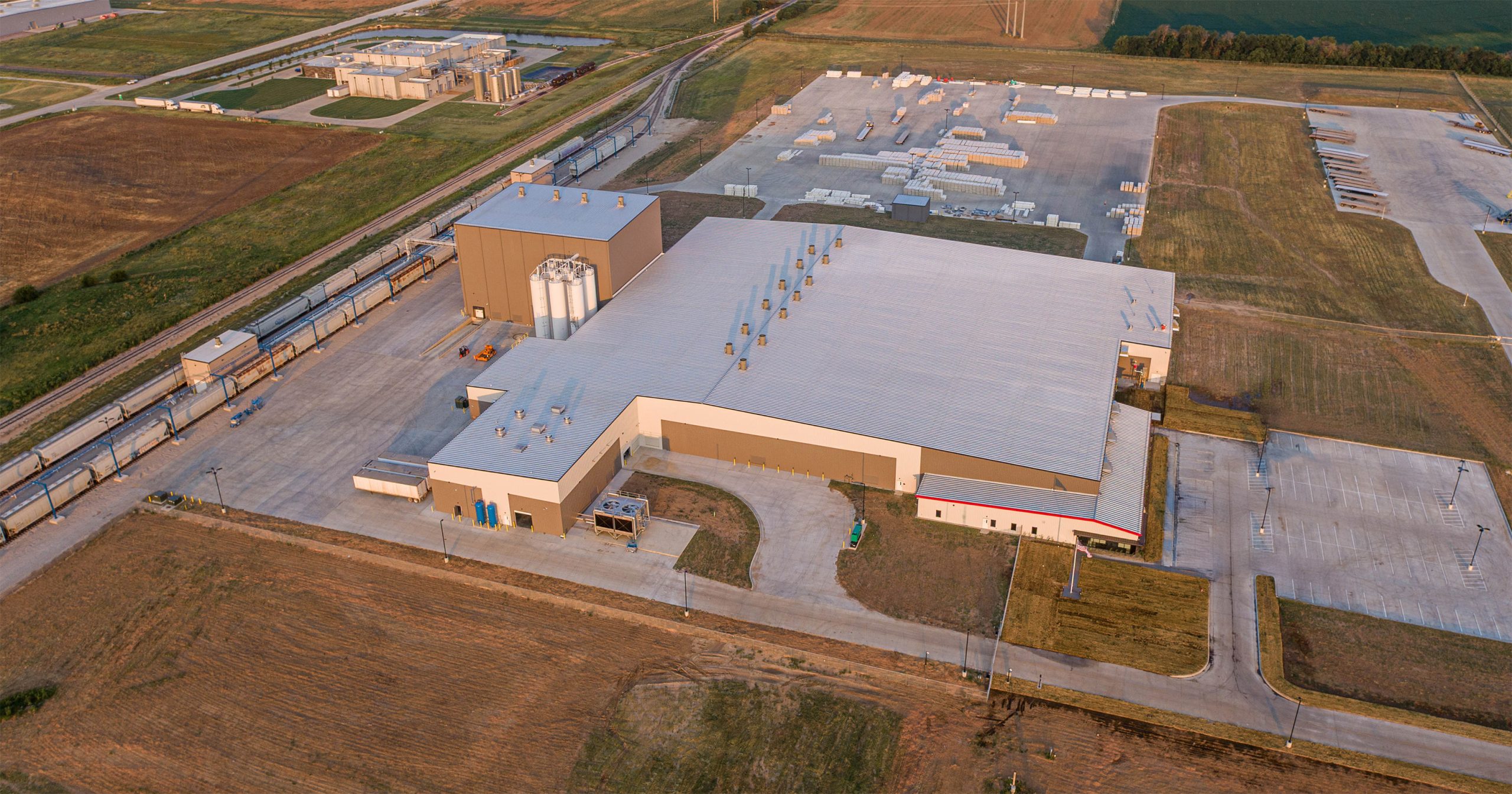
Executing the Plan for Success: Charlotte Pipe & Foundry Co.
September 30, 2025
On the ’80s TV show “The A-Team,” the leader of the group used to always say, “I love it when a plan comes together.” That could be the catchphrase at MKEC, too. While we’re not “a crack commando unit” like Hannibal Smith, B.A. Barracus, Howling Mad Murdoch, and Faceman Peck, we are big fans of a plan that works.
Whether our clients come to us with an idea that needs to be designed or an already completed design that needs to be implemented, our team of “crack” engineers is ready to take on the challenge.
Gathering the team
Back in 2023, Charlotte Pipe & Foundry Co., came to us with plans to build an $80 million, 175,000-square-foot PVC pipe manufacturing facility in Maize, Kansas. This wasn’t a client that needed a lot of design input on the facility. They knew they wanted this plant to look and operate just like their plants in other parts of the country. What they were looking for was engineering and construction partners to implement the plan on site in Maize.
Leading up to this, Charlotte Pipe actually engaged us to assist with their due diligence and entitlement processes as they were executing the real estate transaction for the selected site. We provided a Due Diligence report in December of 2022 and then worked the property through platting and zoning.
When the project was ready to progress into detailed design, we gathered our civil, structural, electrical, and mechanical engineers and set them to the task of coordinating with Hutton, the architect and construction company on the project, to take Charlotte Pipe’s existing design and make it work with the site the company had chosen.
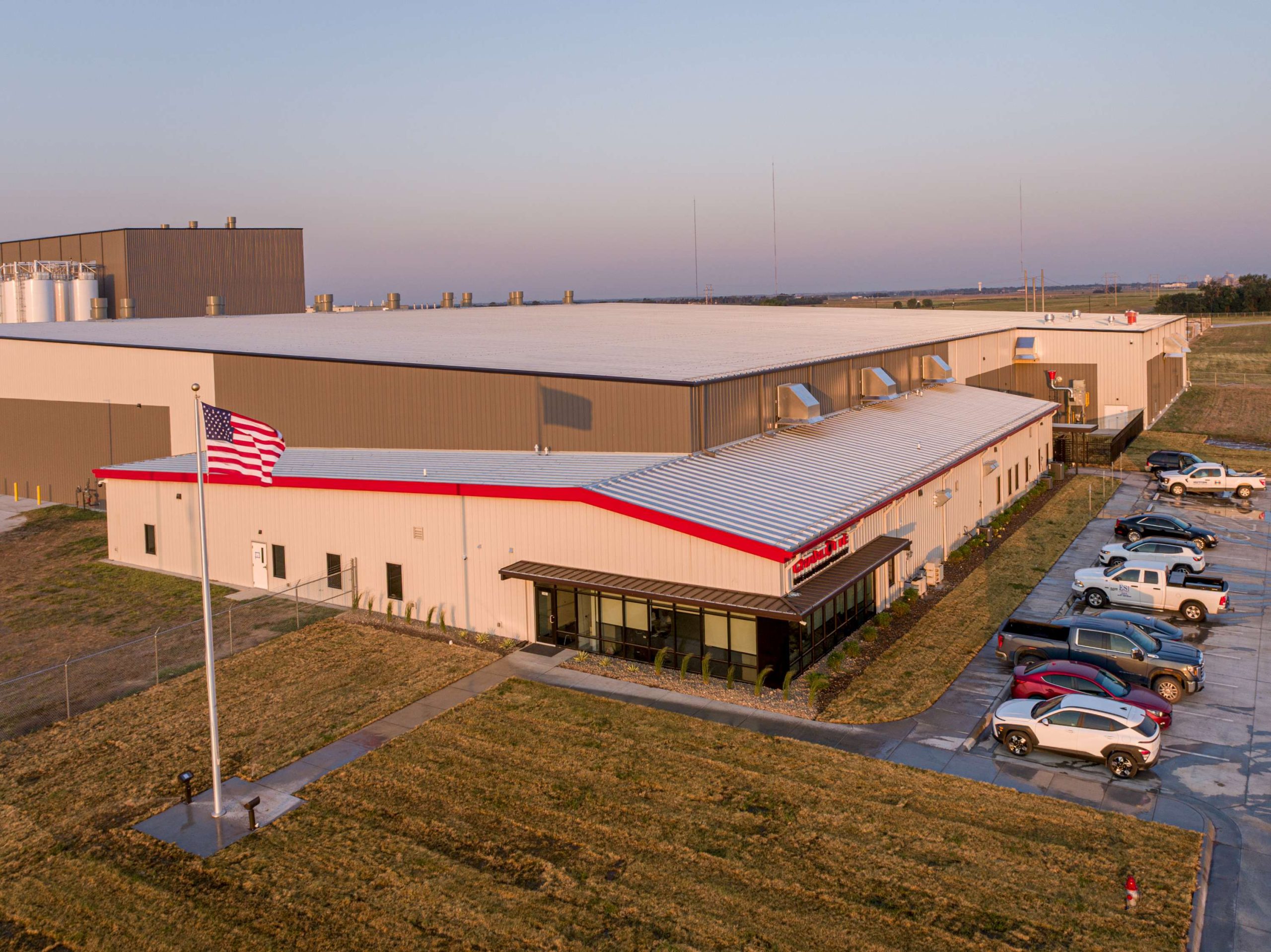
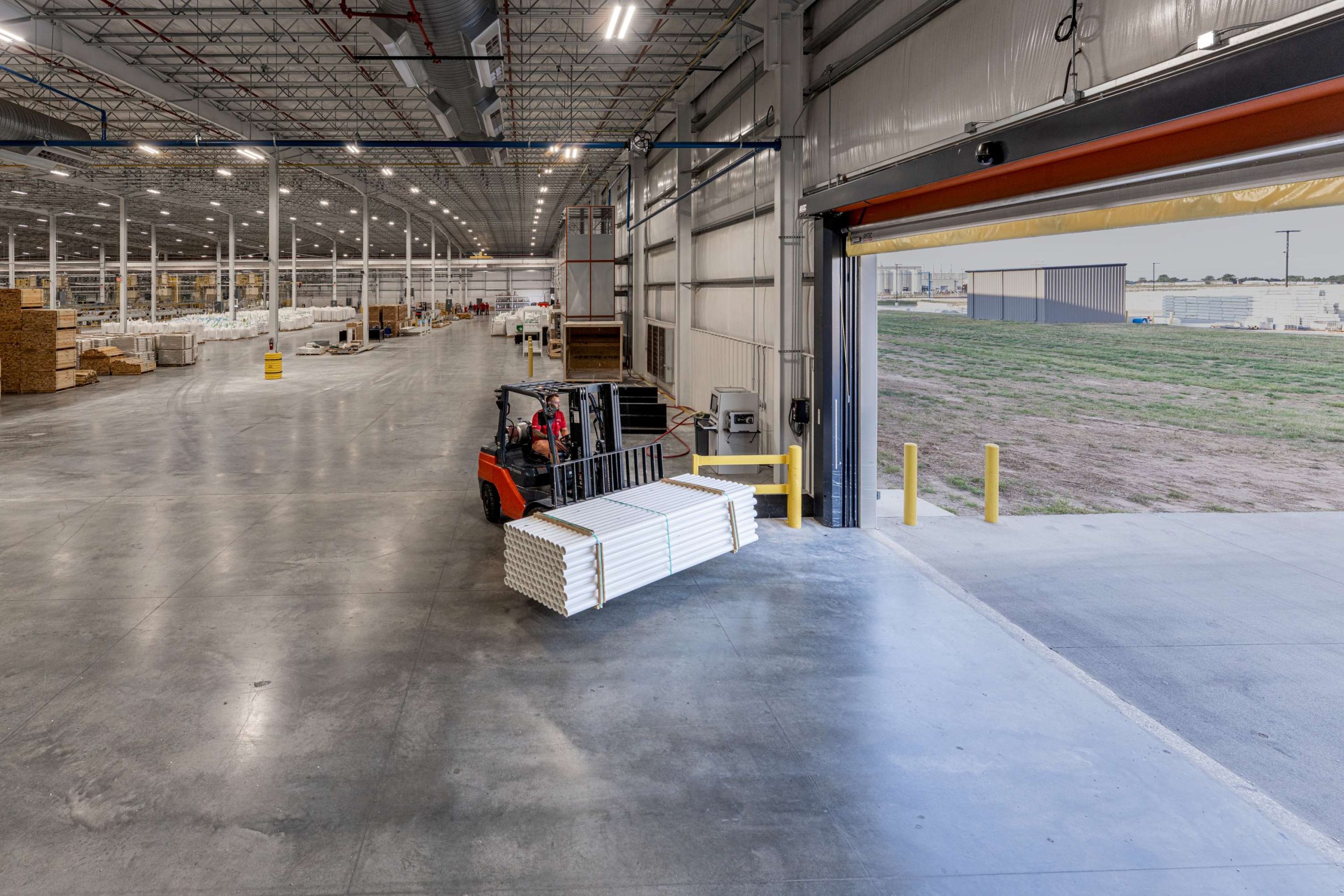
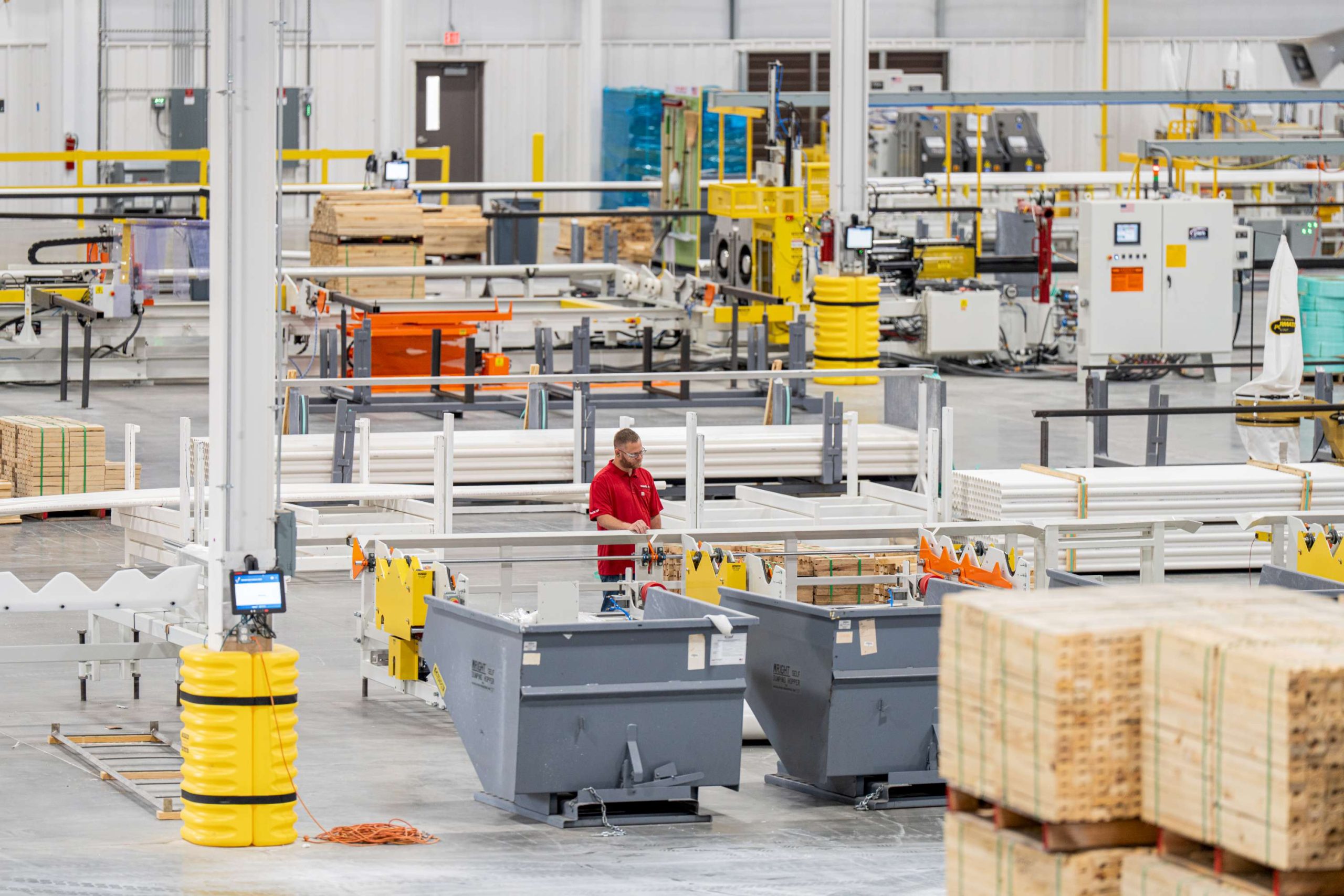
Implementing the plan
On many projects, our team spends time coordinating internally between disciplines, but with this project, each department spent more time working with the client than with other departments.
“On this particular project, the owner had their own electrical engineer that already knew what they wanted,” says Taylore Eisenhauer, electrical engineer for MKEC. “When I called to talk to their local sales rep, he already had all the specs which streamlined my role on the project.”
Our electrical team modeled the busway and assisted the contractor with installation requirements on the project.
As part of our structural design efforts, Neil Satrom, structural engineer for MKEC worked through several challenges due to the size of the building.
“A building with the square footage and height requirements needed for the project resulted in a significant amount of wind uplift force on the foundations. Unfortunately, the only way to resist significant uplift forces in the foundations is to provide additional weight to hold the structure down,” says Satrom. “This is typically accomplished through increasing the foundation sizes to provide additional concrete mass or increase the depth of the footings so that we can rely on the additional weight of adjacent soil to help hold the structure down. For this project, we implemented both approaches to resist the required uplift forces from the structure.”
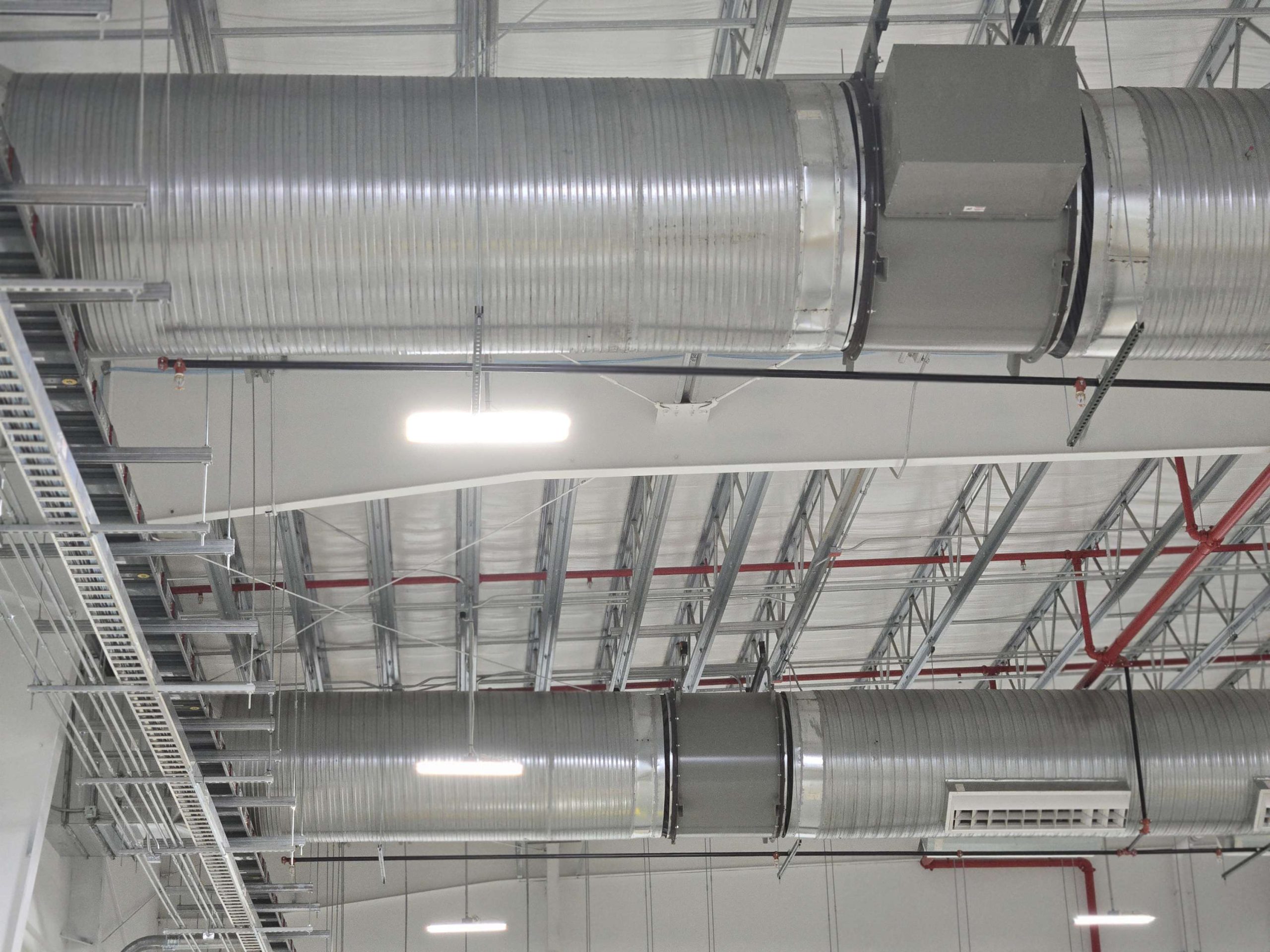
On the mechanical side, Charlotte Pipe had specific ventilation requirements. In a large facility like this one, the PVC pipe manufacturing lines create heat that has to be removed from the building. Without air conditioning, ventilation is vital to keeping employees comfortable, so Charlotte Pipe wanted the ventilation directed to the areas where employees would congregate the most.
“They had some specific locations in the building where they felt like the workers were going to be, so they wanted us to design the ventilation in a more targeted way to be where the people are,” says Richard Bartlett, mechanical engineer for MKEC. “A lot of what we do is pretty passive and simple, but this was a lot more about directing it where the people were. It is still a comfortable work environment for the employees despite the lack of air conditioning.”
For civil, this site presented unique challenges due to its large, flat terrain and significant off-site runoff, which created a high risk of flooding. We needed to elevate the new facility enough to safeguard the investment while minimizing costly fill material. To achieve this balance, we designed broad, shallow swales that efficiently convey runoff across the site, allowing the building pad to remain as low as possible without compromising flood protection.
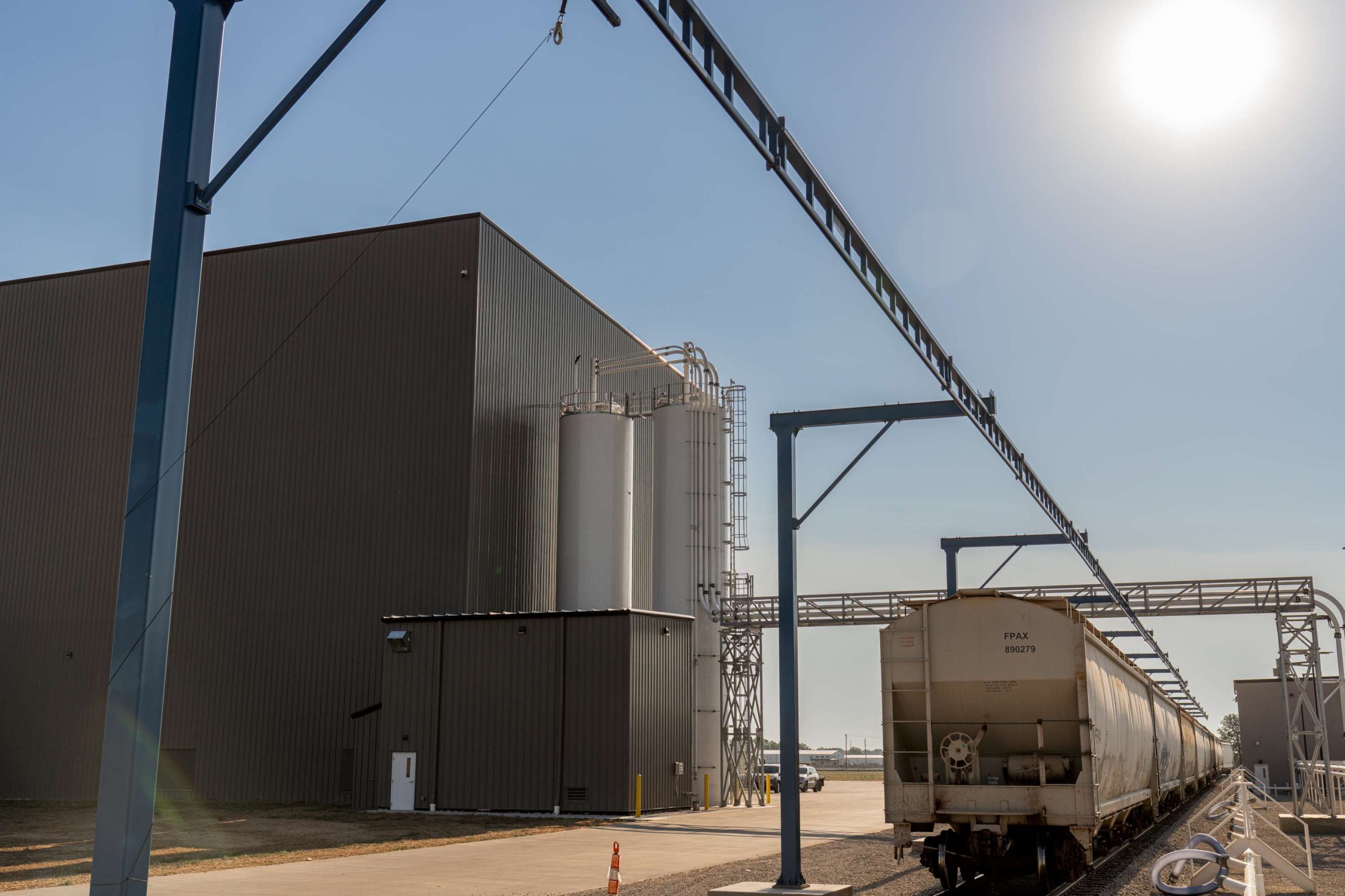
Enjoying the success
Nearly three years after we started working on the Charlotte Pipe project, the new facility opened in Maize in August 2025, bringing PVC pipe manufacturing to the center of the country. But for our team at MKEC, this is just the beginning.
“We have a good amount of experience on these larger manufacturing facilities,” Satrom says. “We are now doing several large projects with Hutton, and this one was a great starting point to that relationship. We’re really using a lot of what we learned on this job for these future collaborations.”
So, just like our ’80s television counterparts, “if you have a problem” creating or implementing a design, “maybe you can hire” MKEC’s team.

